
Homemade Mango Panna Cotta: The Recipe for An Eye-Catching Dessert That Will Impress Everyone!

Craving a dessert that's both creamy and bursting with fresh flavor? Then brace yourself for a twist on the classic Panna Cotta! This recipe ditches the blended approach and instead creates a stunning layered masterpiece: a silky-smooth Panna Cotta base topped with a vibrant mango coulis. With each bite you get a taste of sweet, rich cream, followed by a burst of tropical mango. This separation allows the flavors to truly shine, offering a textural contrast as well. With just two main components, you can create a show-stopping dessert that's perfect for a light and refreshing end to any meal.
What is Mango Panna Cotta?
Panna Cotta itself, meaning "cooked cream" in Italian is often credited to the northern Italian region of Piedmont. It’s a simple yet elegant dessert made with cream, sugar, and a thickening agent like gelatin. In a classic Mango Panna Cotta, the mango flavor is typically incorporated by blending some of the mango puree into the cream mixture before it sets. This results in a uniform panna cotta with a subtle mango taste throughout. However, this version is essentially a Mango Panna Cotta with Mango Coulis. The Panna Cotta remains the classic Italian dessert made with cream, sugar, and a thickening agent like gelatin. However, the mango part here is made by blending fresh or frozen mangoes with gelatin and a touch of sugar and lemon juice for a brighter flavor. In this case, the coulis is kept separate from the panna cotta, allowing for a layered presentation and a more intense burst of mango flavor when spooned together.
Is Panna Cotta the Same Thing as Crème Brulée?
No. Panna cotta is an Italian dessert made from sweetened cream thickened with gelatin and molded, often served with fruit or caramel sauce. Crème brûlée, a French dessert, consists of a rich custard base topped with a layer of hard caramelized sugar. While both are creamy and indulgent, their textures and preparation methods are distinct.
Tips
- Use full-fat milk and cream for the richest texture. Avoid low-fat options as they won't set as well.
- For an extra smooth panna cotta, strain the cream mixture after heating to remove any lumps.
- Let the panna cotta cool completely before pouring it into serving dishes. This will prevent separation and ensure a clean layer effect.
- Choose ripe mangoes for the best flavor. Look for ones that have a slight give when pressed gently.
- The sweetness of your coulis will depend on the ripeness of your mangoes. Start with less sugar and add more to taste for a perfectly balanced flavor.
- Straining the coulis after blending removes any unwanted fibers, resulting in a silky smooth sauce.
- A touch of lemon juice in your coulis can help brighten the mango flavor and prevent browning.
- Once the panna cotta has set, carefully pour the coulis over the top, creating a distinct layer. You can even tilt the glasses slightly for a more artistic effect.
- Garnish your panna cotta with fresh mango slices, mint leaves, or a sprinkle of chopped pistachios for an extra pop of color and texture.
- Make sure to chill the panna cotta and coulis separately before assembling for the best results.
Can I Use Low-Fat Cream For The Panna Cotta?
It's not recommended as it won't set as well. Opt for full-fat cream for the richest texture.
Can I Use Another Type Of Fruit Besides Mango For The Coulis?
Absolutely! Berries, passionfruit, or any other fruit you like would work well.
How Do I Get The Panna Cotta Perfectly Smooth?
Strain the cream mixture after heating to remove any lumps.
How Do I Know If My Mango Is Ripe?
A ripe mango will have a slight give when pressed gently.
Can I Make This Vegan?
Yes! Replace the gelatin with agar-agar, a plant-based gelling agent, using about half the amount. Substitute the milk and heavy cream with plant-based alternatives like almond milk or coconut cream.
Can I Freeze Mango Panna Cotta?
Freezing is not recommended as it can affect the texture.
How to Store Mango Panna Cotta
The panna cotta base can last in the fridge for up to 3 days when covered with plastic wrap or an airtight container. The mango coulis, due to the fresh fruit, should be stored in an airtight container in the fridge for a maximum of 2 days. Freezing is not recommended for either the panna cotta or the mango coulis, as it can affect the texture and lead to separation
Ingredients
How To Make Mango Panna Cotta
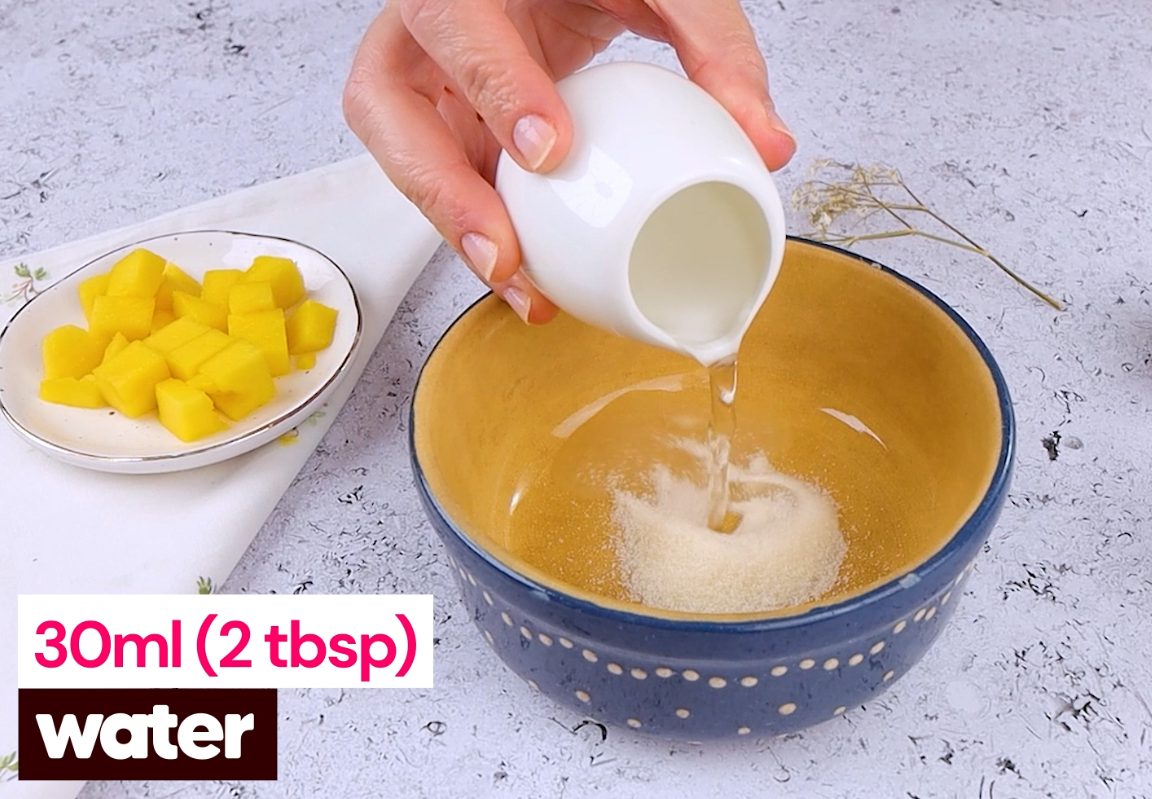;Resize,width=712;)
In a small bowl, sprinkle the gelatin over cold water and let it sit for 10 minutes to bloom. This softens the gelatin for proper thickening.
In a small bowl, sprinkle the gelatin over cold water and let it sit for 10 minutes to bloom. This softens the gelatin for proper thickening.
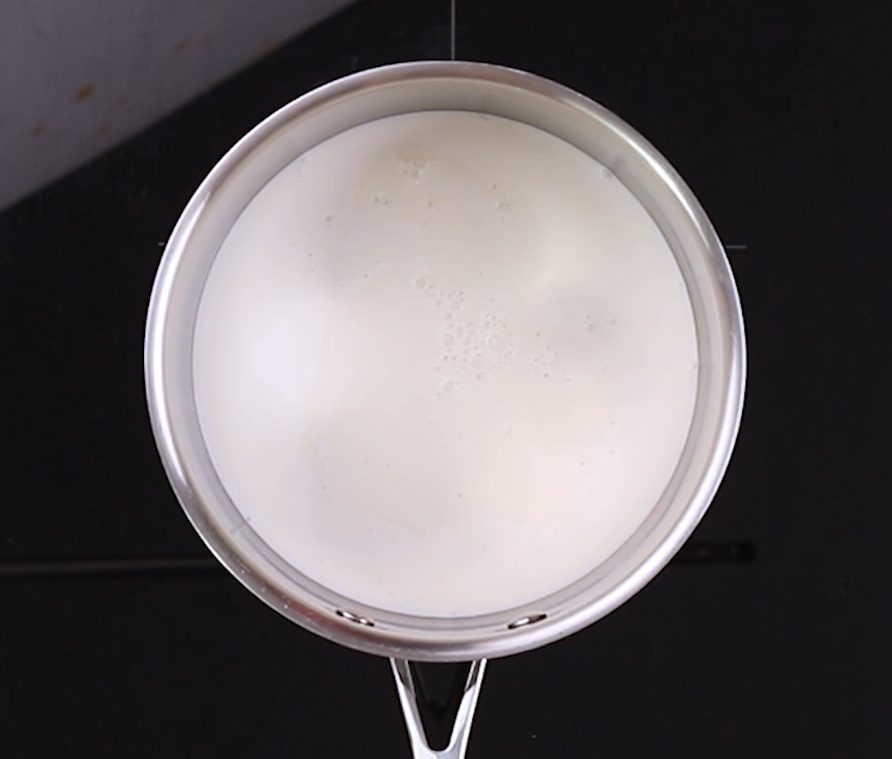;Resize,width=712;)
In a saucepan, whisk together milk, heavy cream, sugar, and vanilla essence until the sugar dissolves.
In a saucepan, whisk together milk, heavy cream, sugar, and vanilla essence until the sugar dissolves.
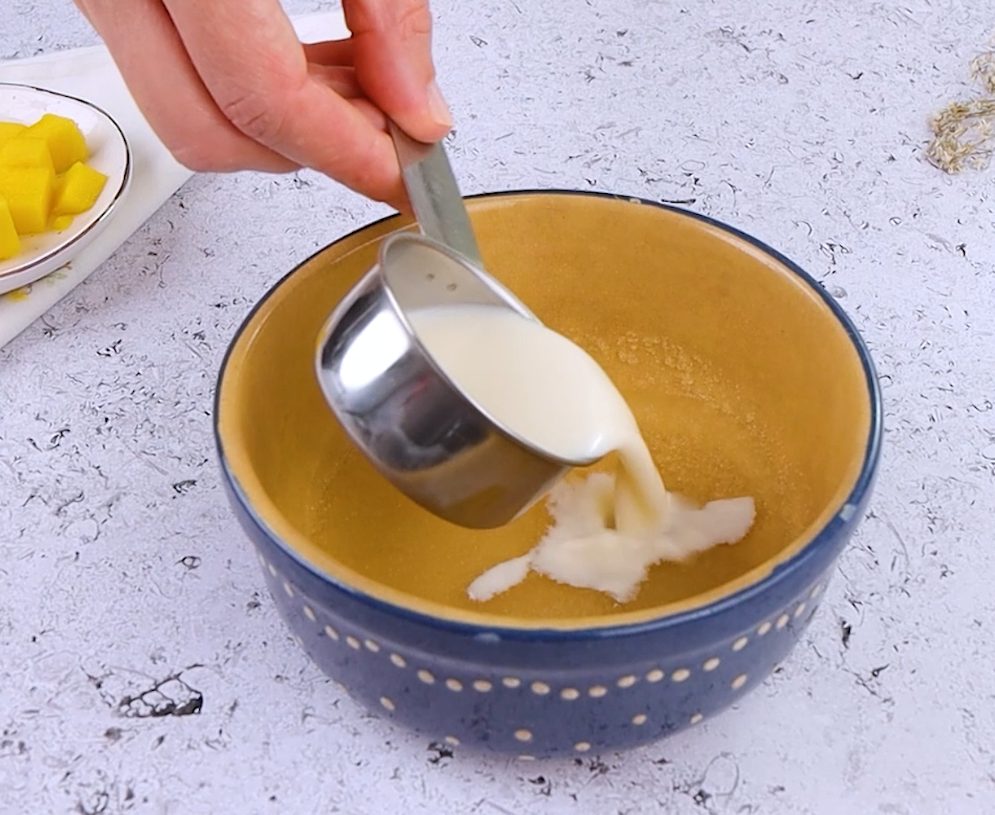;Resize,width=712;)
Take a small amount of the warm cream mixture and whisk it into the bloomed gelatin. This helps prevent the gelatin from clumping when added to the main pot.
Take a small amount of the warm cream mixture and whisk it into the bloomed gelatin. This helps prevent the gelatin from clumping when added to the main pot.
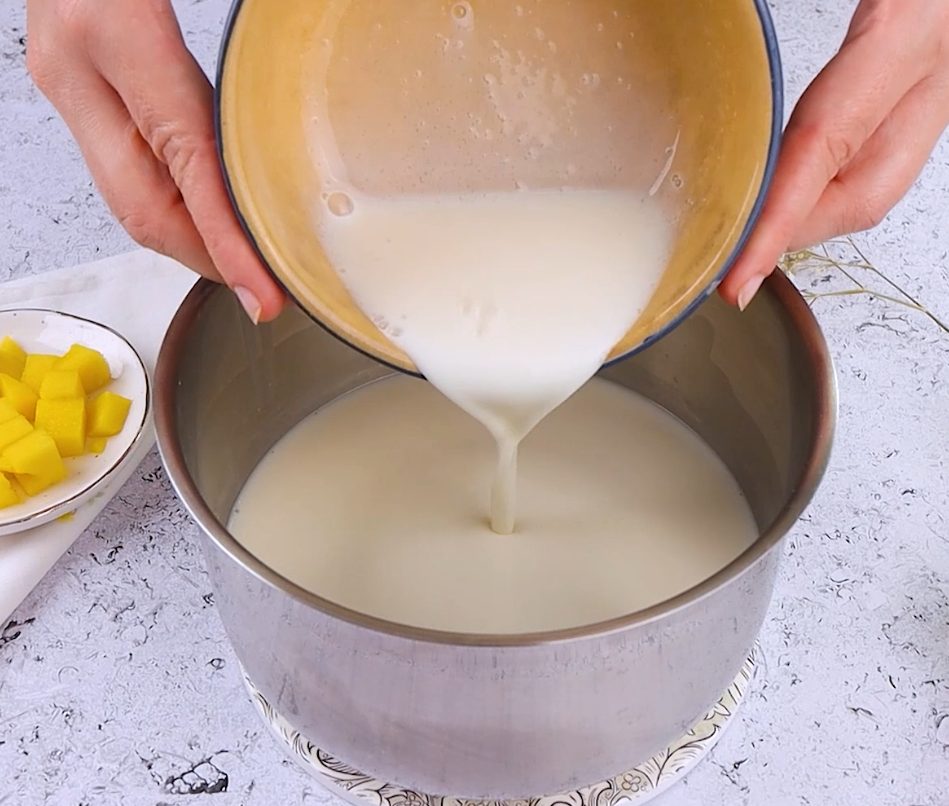;Resize,width=712;)
Pour the tempered gelatin mixture back into the saucepan with the remaining cream. Whisk everything together until well combined. For an extra smooth texture, you can strain the mixture through a fine-mesh sieve.
Pour the tempered gelatin mixture back into the saucepan with the remaining cream. Whisk everything together until well combined. For an extra smooth texture, you can strain the mixture through a fine-mesh sieve.
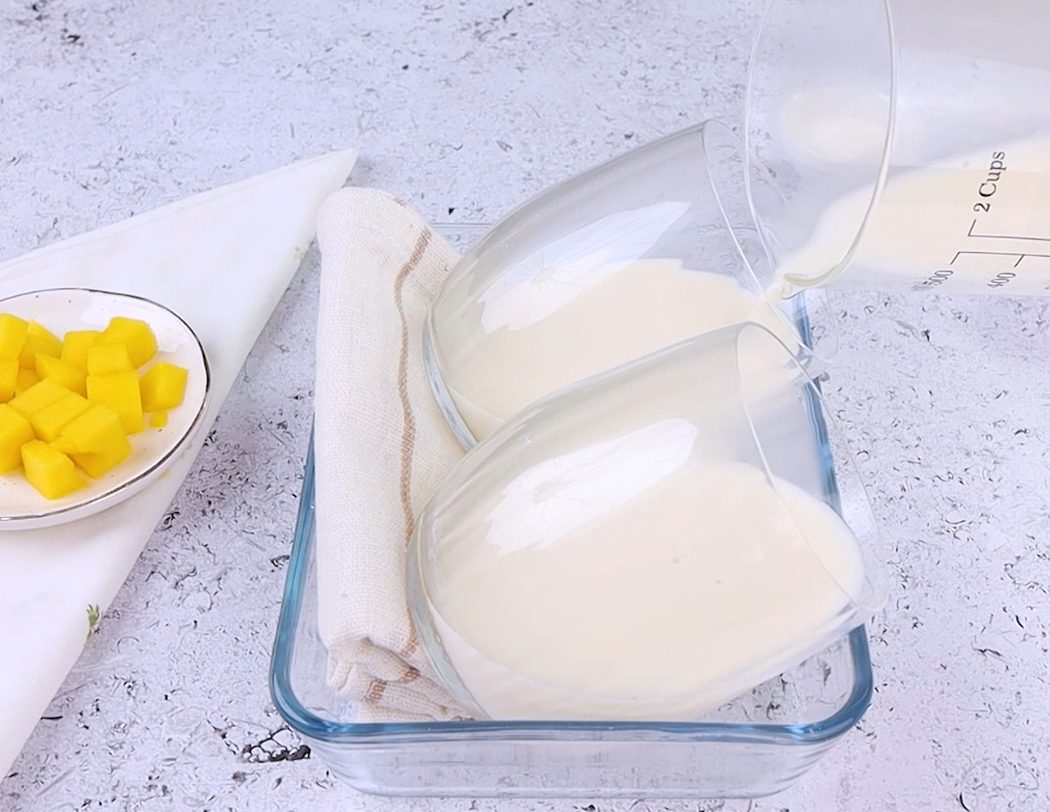;Resize,width=712;)
Tilt your serving glasses at a 45-degree angle and carefully pour the white cream mixture to create a slanted layer. Chill the glasses in the fridge for at least 4 hours, or until completely set.
Tilt your serving glasses at a 45-degree angle and carefully pour the white cream mixture to create a slanted layer. Chill the glasses in the fridge for at least 4 hours, or until completely set.
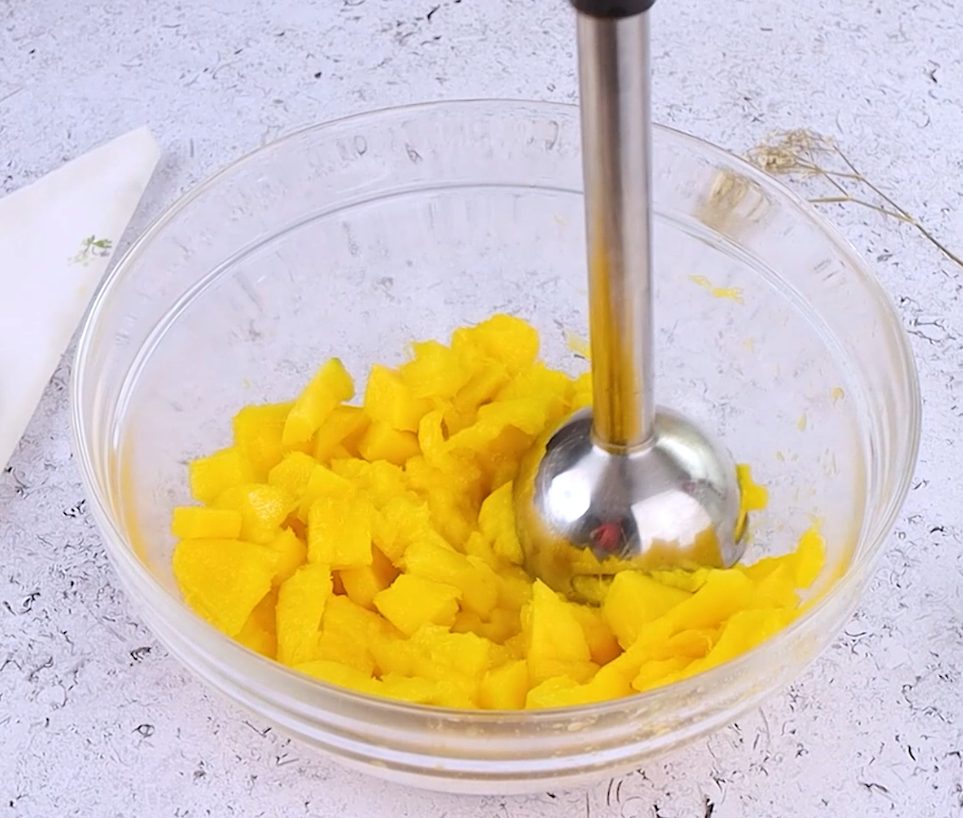;Resize,width=712;)
Cut the mango into cubes and blend them with an immersion blender until smooth. Strain the puree through a sieve to remove any fibers for a silky texture.
Cut the mango into cubes and blend them with an immersion blender until smooth. Strain the puree through a sieve to remove any fibers for a silky texture.
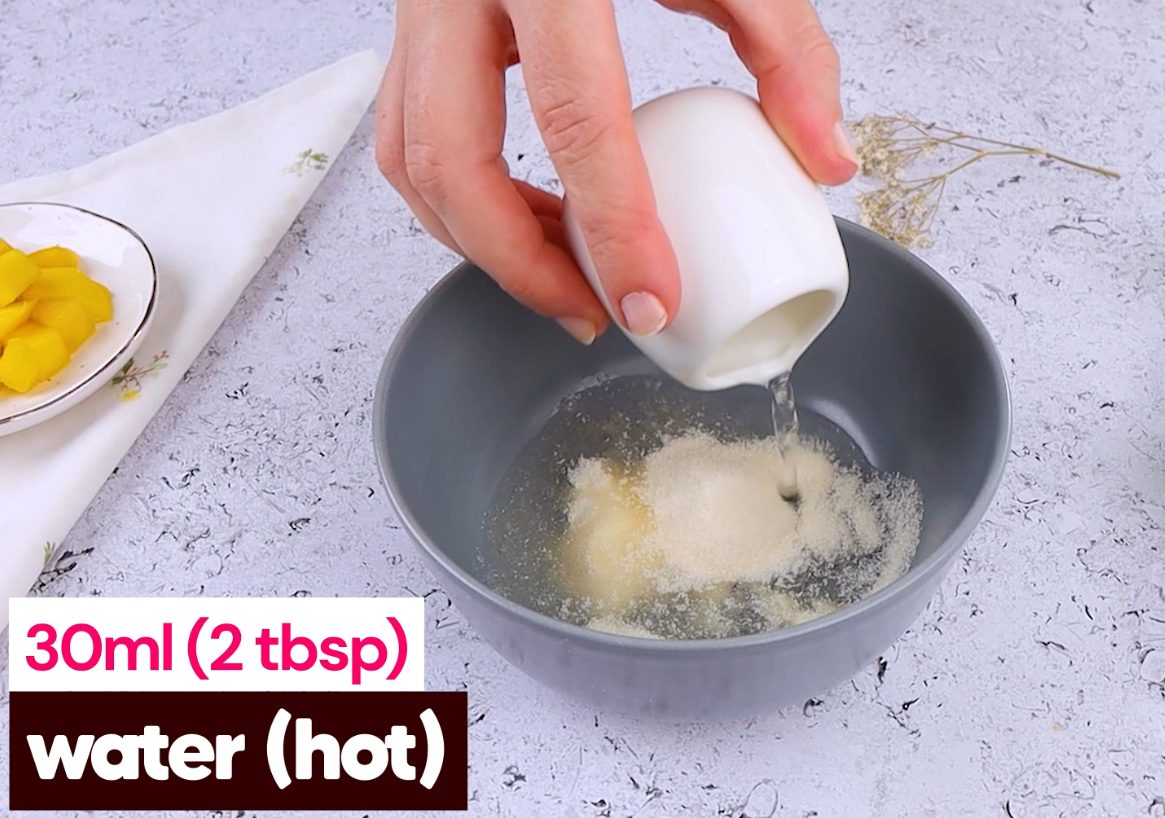;Resize,width=712;)
In a separate bowl, repeat step 1, combining gelatin and hot water to bloom for 10 minutes.
In a separate bowl, repeat step 1, combining gelatin and hot water to bloom for 10 minutes.
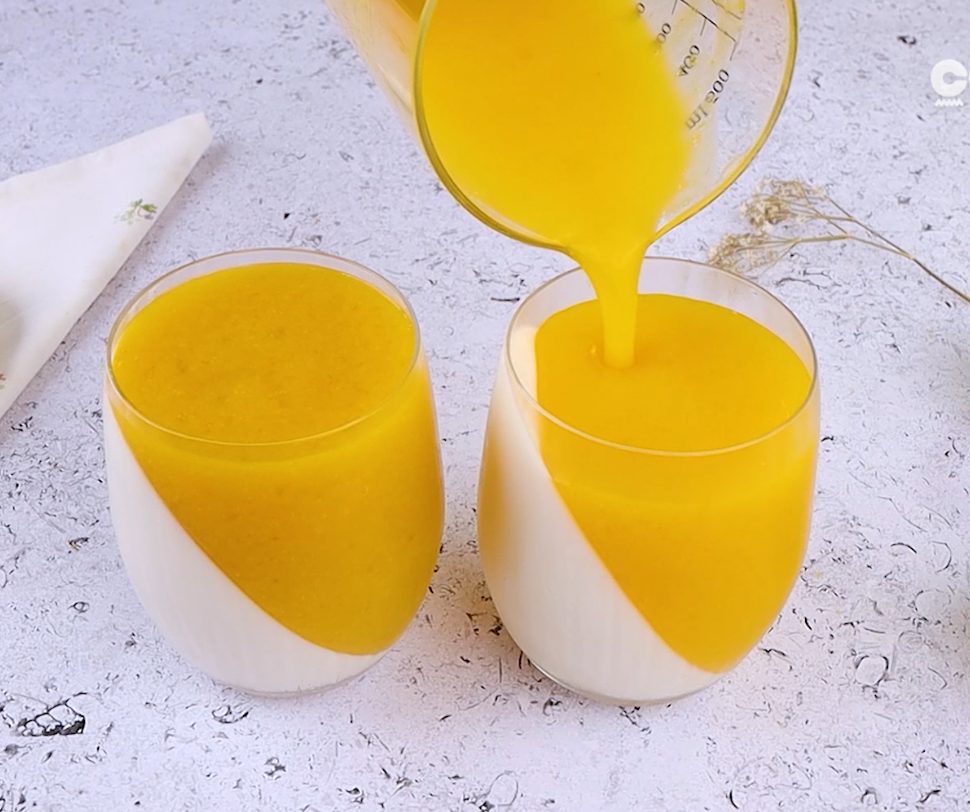;Resize,width=712;)
Stir the bloomed gelatin into the mango puree until well combined. Pour the mango coulis over the chilled panna cotta layer in the glasses. Refrigerate for an additional 4 hours, or until the coulis sets.
Stir the bloomed gelatin into the mango puree until well combined. Pour the mango coulis over the chilled panna cotta layer in the glasses. Refrigerate for an additional 4 hours, or until the coulis sets.
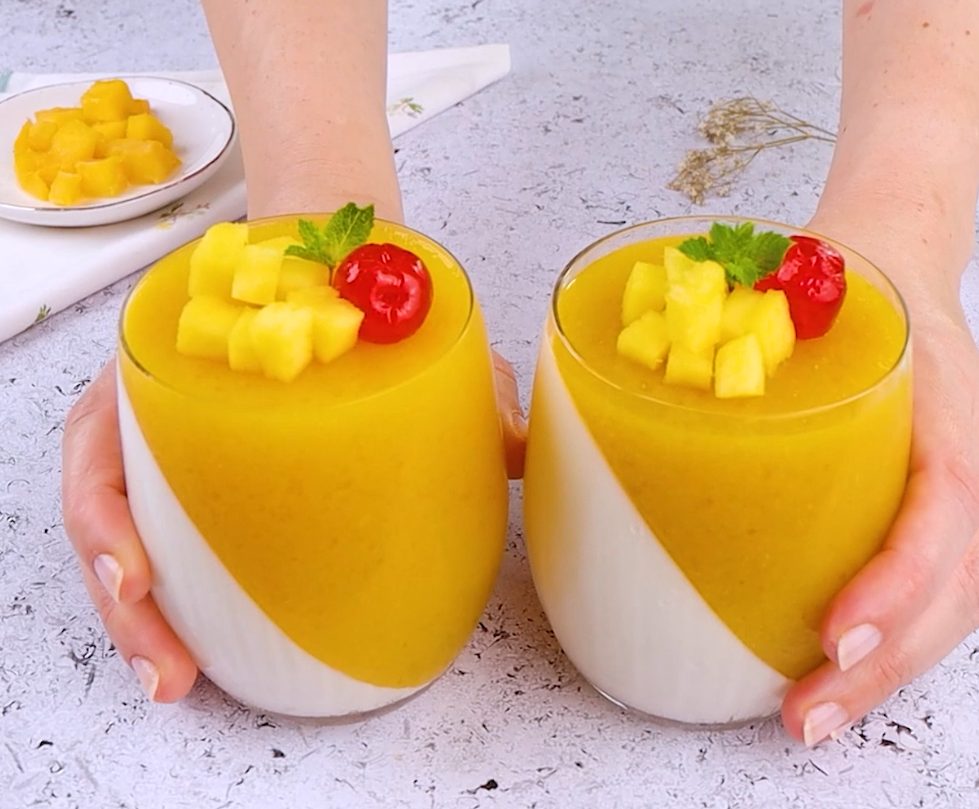;Resize,width=712;)
After chilling, carefully remove the panna cotta glasses from the fridge.
After chilling, carefully remove the panna cotta glasses from the fridge.
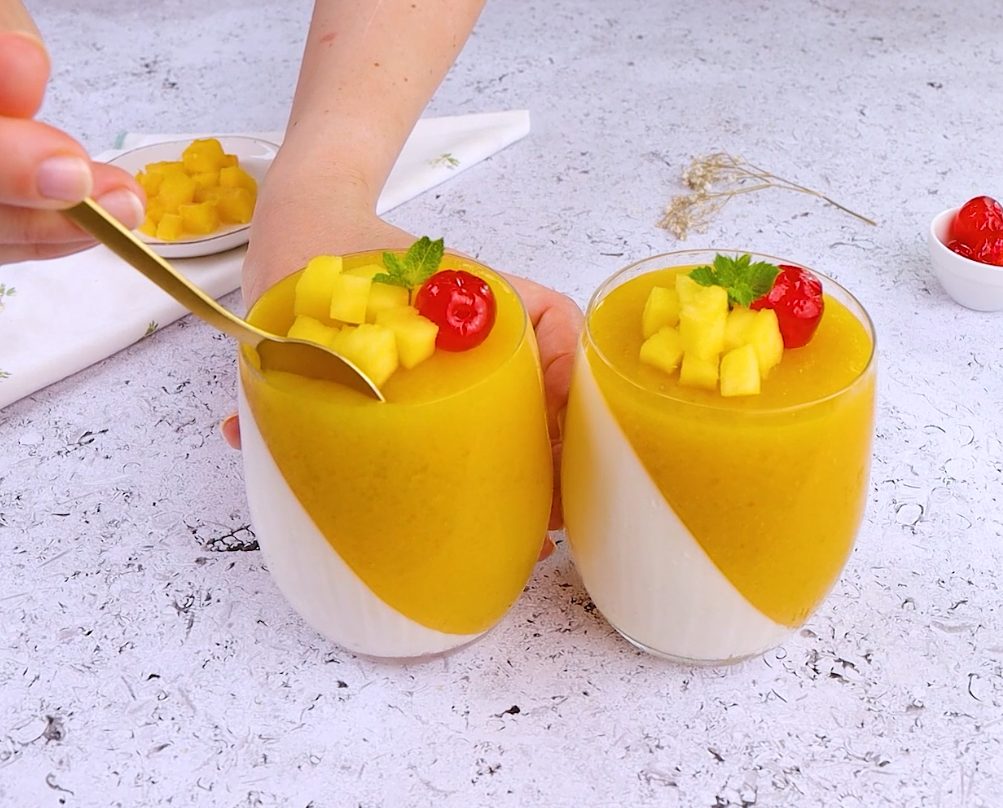;Resize,width=712;)
Garnish your creation with fresh mango cubes, mint leaves, and a red cherry for a touch of elegance and additional flavor. Serve chilled and enjoy!
Garnish your creation with fresh mango cubes, mint leaves, and a red cherry for a touch of elegance and additional flavor. Serve chilled and enjoy!
;Resize,width=767;)


;Resize,width=712;)
